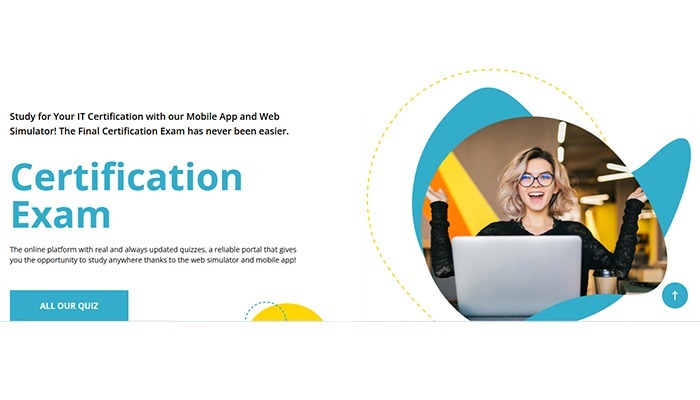
The design of an effective lesson plan is crucial in ensuring that teaching and learning are aligned with the goals of the curriculum. One of the key strategies in designing an impactful lesson plan is the concept of طرح درس تمام ساحتی or a holistic lesson plan. This approach considers multiple facets of learning and incorporates them into a cohesive teaching strategy. This article will explore best practices for creating effective طرح درس تمام ساحتی, ensuring that all aspects of a lesson, from content to student engagement, are fully integrated.
Understanding طرح درس تمام ساحتی
طرح درس تمام ساحتی refers to a comprehensive lesson plan that incorporates a holistic approach to teaching. Unlike traditional lesson plans that focus primarily on content delivery, a طرح درس تمام ساحتی emphasizes a broader perspective. This includes not only the subject matter but also the students’ emotional, social, and cognitive development. The goal is to create a balanced and well-rounded learning experience that caters to the diverse needs of students.
By considering various aspects of the learning process—such as emotional intelligence, social interaction, and critical thinking—a طرح درس تمام ساحتی ensures that all areas of a student’s development are addressed during the lesson.
Key Components of طرح درس تمام ساحتی
1. Clear Learning Objectives
The foundation of any طرح درس تمام ساحتی is a set of clear and measurable learning objectives. These objectives guide the entire lesson and provide a roadmap for both the teacher and the students. When designing a طرح درس تمام ساحتی, it’s essential to establish what you want your students to achieve by the end of the lesson. These goals should not only focus on knowledge acquisition but also on skill development and critical thinking.
To ensure that the lesson plan is holistic, objectives should be multi-dimensional. For example, they might include:
- Cognitive objectives: Understanding and recalling information.
- Behavioral objectives: Developing specific skills or behaviors.
- Emotional objectives: Fostering confidence or empathy.
This well-rounded approach ensures that all areas of student growth are considered, making the learning experience more effective.
2. Engaging and Interactive Teaching Methods
Traditional teaching methods often rely on passive learning, where students listen to the teacher and take notes. In contrast, a طرح درس تمام ساحتی encourages active learning. This can be achieved through various interactive teaching methods, such as group discussions, problem-solving activities, or hands-on learning experiences.
By using engaging activities, students are not only exposed to new information but also encouraged to think critically, collaborate with peers, and engage with the content on a deeper level. It is important to design activities that cater to different learning styles. Some students may learn best through visual aids, while others may prefer tactile or auditory experiences.
An effective طرح درس تمام ساحتی should incorporate a variety of teaching methods, including:
- Collaborative Learning: Group projects, peer discussions, and collaborative problem-solving foster teamwork and communication skills.
- Inquiry-Based Learning: Encourage students to ask questions and seek answers through research or experimentation.
- Experiential Learning: Activities that allow students to engage in hands-on learning deepen understanding and retention of material.
By integrating these interactive methods, students are actively involved in the learning process, making the lesson both engaging and effective.
3. Assessment and Feedback
Assessing students’ understanding during and after the lesson is crucial in any طرح درس تمام ساحتی. Ongoing assessments allow the teacher to monitor progress, identify areas of difficulty, and adjust teaching strategies accordingly. These assessments should be varied to ensure a holistic view of the student’s abilities.
Formative assessments—such as quizzes, polls, and informal observations—can be conducted throughout the lesson. This allows the teacher to gather real-time data on student understanding and make necessary adjustments. Summative assessments, such as projects or tests, should be used at the end of the lesson to evaluate the overall learning outcome.
Feedback is also an integral part of the assessment process. Constructive feedback helps students understand their strengths and areas for improvement. In a طرح درس تمام ساحتی, feedback should not only be about the content but also about the learning process itself, such as collaboration, critical thinking, and problem-solving skills.
4. Student-Centered Learning
A طرح درس تمام ساحتی is most effective when it prioritizes the needs, interests, and experiences of the students. Student-centered learning focuses on the individual learning journeys of students, encouraging them to take ownership of their education. This can be achieved by incorporating choice, autonomy, and personalized learning experiences into the lesson.
For example, offering students options for how they can demonstrate their understanding—such as through written essays, oral presentations, or creative projects—allows them to engage in the learning process in ways that resonate with their strengths and interests. Similarly, incorporating elements of students’ cultural backgrounds and real-world experiences into the lesson content makes learning more relevant and meaningful.
Encouraging student agency through choice and active participation leads to a more engaging and effective طرح درس تمام ساحتی. This approach also fosters a sense of responsibility and motivation in students, which can lead to improved learning outcomes.
5. Integrating Technology
In today’s digital age, technology plays a crucial role in education. An effective طرح درس تمام ساحتی should integrate appropriate technological tools to enhance learning. Technology can offer various opportunities to make learning more interactive and engaging, such as through online resources, educational apps, or digital collaborative tools.
For instance, online platforms can be used for virtual discussions, collaborative projects, or interactive quizzes. Visual aids like videos, infographics, and simulations can support the understanding of complex concepts. However, it is important to ensure that the use of technology aligns with the lesson’s objectives and does not become a distraction.
6. Creating a Positive Learning Environment
The physical and emotional environment in which students learn plays a significant role in the success of a طرح درس تمام ساحتی. A positive learning environment is one that is welcoming, inclusive, and supportive. This involves ensuring that the classroom is physically comfortable and free of distractions, as well as fostering a positive emotional climate where students feel safe, respected, and encouraged to participate.
In a طرح درس تمام ساحتی, the teacher should create opportunities for students to collaborate, share ideas, and learn from one another in a supportive setting. Establishing clear expectations for behavior, providing positive reinforcement, and encouraging students to support each other can help cultivate this type of environment.
7. Reflecting and Improving
After each lesson, it is essential for teachers to reflect on the effectiveness of the طرح درس تمام ساحتی. Reflection helps to identify what worked well and what areas could be improved. Teachers should evaluate whether the objectives were met, how engaged students were, and how well they understood the content.
This reflective practice allows for continuous improvement and ensures that each طرح درس تمام ساحتی becomes more effective over time. Teachers can make adjustments to teaching methods, assessments, and classroom management strategies based on the reflections of each lesson.
Conclusion
Designing an effective طرح درس تمام ساحتی requires a thoughtful, balanced approach that takes into account the diverse needs and strengths of students. By setting clear learning objectives, engaging students through interactive methods, assessing their progress, and creating a positive and supportive learning environment, teachers can foster a deeper and more meaningful learning experience. With reflection and continual improvement, teachers can develop lessons that not only meet academic goals but also support the holistic development of their students.







